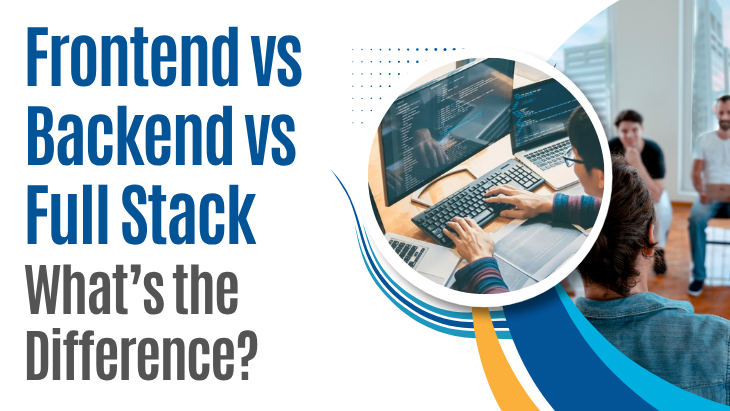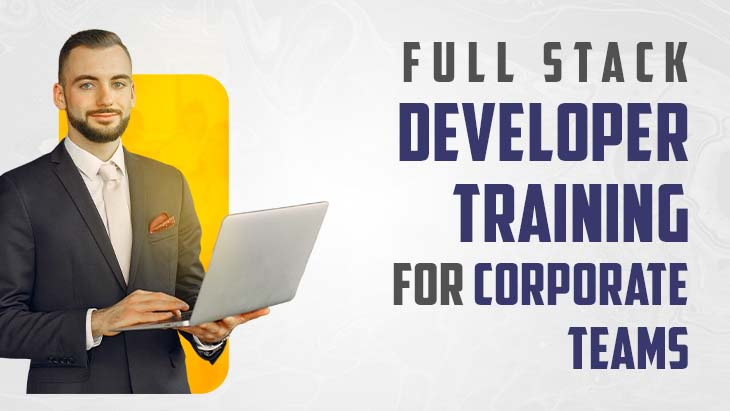"Frontend," "backend," and "full stack" are all terms used in web development, but many people don't know what makes them different. Understanding the distinctions between these roles is crucial whether you're embarking on a tech career, recruiting developers, or simply attempting to understand the functioning of websites.
In this blog post, we'll discuss the main tasks, skills, and tools that frontend, backend, and full-stack developers need to do their jobs. We'll also point out which path might be best for your goals, which will help you choose the right direction in the quickly growing field of web development.
What is Frontend Development?
Users of a website or web application see and interact with frontend development. Another moniker for it is the "client-side." Frontend work covers everything from layout to color, fonts, buttons, menus, and responsiveness.
Common Technologies:
- *HTML develops the framework of web pages.
- *Styles the web pages with color, layout, and typography in CSS.
- *JavaScript brings forms, sliders, and dropdowns to increase interaction.
- *Popular Frameworks: React, Angular, Vue.js
Responsibility:
- *Constructing easily navigable and responsive user interfaces
- *Code helps designs to come alive.
- *Enhance load times and user experience.
- *Working along with backend developers and designers
Employment Roles:
- *Developer on Frontends
- *UX/UI Developer
- *Engineer of Web Interfaces
What is Backend Development?
The part users never see is backend development. It drives the backstage logic—managing requests, data processing, file storage, and response generation.
Often used technologies:
- *Languages: Python, Java, PHP, Ruby, Node.js.
- *Database: MongoDB, Postgresional, MySQL
- *Express.js, Django, Spring Boot, Laravel—frames.
- *REST, GraphQL, Apache, Nesame, APIs and Servers
Responsibilities:
- *Creating server-side application logic
- *Database management and server configuration
- *Managing user authorization and authentication
- *developing and preserving APIs
Roles in Work:
- *Engineer for Backends
- *Engineer working from the server side
- *Director of APIs
Full Stack Development: What is It?
Working on both frontend and backend, full stack developers control the whole flow of a web application. They are flexible and valuable across teams since they know how each layer links.
Common technologies:
- *Frontend: React or angular HTML, CSS, JavaScript
- *Node.js, Python, PHP backends
- *Database: MySQL, MongoDB, Postgresql
- *Tools: Git/GitHub, Docker, APIs.
Job Roles:
- *Creating the whole web application.
- *Creating client-side and server-side code.
- *Guaranteeing seamless data flow from UI to database
- *Working all through the development process.
Roles in the Job:
- Developer from Full Stack
- Software Engineer
- Product Engineer
Key Differences Between Frontend, Backend & Full Stack
|
Feature |
Frontend |
Backend |
Full Stack |
|
Focus |
User Interface (UI) |
Server Logic & Data |
End-to-End |
|
Tools Used |
HTML, CSS, JS, React |
Node.js, Django, APIs |
Combination of both |
|
Visibility |
Visible to users |
Behind the scenes |
Both |
|
Responsibilities |
Layout, design, UX |
Data, logic, security |
Full application |
|
Learning Curve |
Visual and creative |
Logical and analytical |
Comprehensive |
Which One Should You Choose After College?
Making decisions between frontend, backend, or full stack as a college pass-out can be taxing. Here's a pragmatic approach to view it:
- *Frontend is for you if you enjoy design, invention, and instantaneous visual results.
- *Go for Backend if you appreciate working with databases, logic, and behind-the-scenes procedures.
- *Full Stack is a great choice if you wish adaptability, flexibility, and the ability to create complete applications.
As they grow more experienced, many developers begin with frontend or backend then move to full stack.
Why Full Stack Is Gaining Popularity
Full stack developers can manage several roles, thus startups and small businesses sometimes prefer them. Independent construction of a product by a full stack developer helps to minimize the need for several specialists. Although this can be taxing, it also helps the developer to be more flexible and creative.
Full stack development calls for more knowledge, though, and juggling frontend and backend can be difficult. Gradually building your foundation will help you to acquire practical experience via projects and internships.
In Conclusion
Though the field of web development is large, knowing the fundamental roles will help you negotiate your career far more easily. Whether your inclination is for the frontend's inventiveness, backend's complexity, or full stack's adaptability, each has merit.
If you're just starting out after college, think about learning HTML, CSS, and JavaScript to get a sense of frontend. You might then investigate backend languages and frameworks. Full stack development makes sense over time and with effort.
Being flexible and having actual project experience usually counts more in the job market of today than a degree by itself. Choose a road that thrills you, be consistent, and keep growing.
Pro Tips: Create small projects (such as a blog or to-do app) and drive them to GitHub. Companies value your ability to do—not only what you know.
Ready to launch your tech career? Explore Techaedu for Full Stack Development training and start building real-world projects today!





Leave a reply